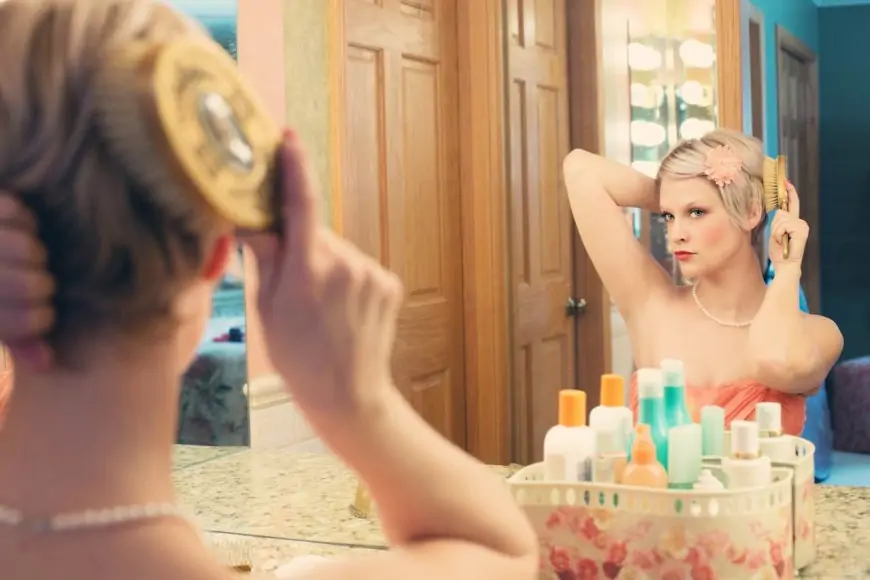Normal Hair:
Hair that falls into the normal category is often wavy to slightly curly. The loose waves or curls create a balance for sebum distribution, preventing the hair from becoming too dry or too oily. However, your hair doesn’t have to be wavy or curly to be classified as normal. Sometimes, a good hair care routine can move you from a greasy or dry category into the normal one.
Hair Care Tips for Different Hair Types
For Greasy Hair
If your hair tends to look like it’s been dipped in oil, pay attention. You should look for shampoos and conditioners that are labeled as clarifying or volumizing.
- Clarifying shampoos: These are stronger and will remove any stubborn oil or product buildup, allowing you to go longer between washes.
- Volumizing shampoos: Lighter than clarifying shampoos, these don’t contain heavy butters or oils that can weigh your hair down.
Pro tip: Double shampoo your hair. This means shampooing, rinsing, and then shampooing again to ensure that all oil and dirt are thoroughly removed, focusing especially on the scalp. If your hair is shorter than 3 or 4 inches, you might not need conditioner unless it’s really dry. For longer hair, use a small amount of conditioner, applying it only from mid-length to ends to avoid a greasy look.
For Dry Hair
For dry hair, seek out shampoos and conditioners labeled nourishing, hydrating, or moisturizing.
- These products usually contain butters, oils, and humectants like glycerin that attract and retain moisture in your hair.
- Always use conditioner after shampooing, as it helps to replace the moisture stripped away during cleansing.
For added moisture retention, consider using a leave-in conditioner on damp hair after your shower. You can also incorporate a hair mask into your routine once or twice a week. Hair masks are essentially deep conditioners that penetrate the hair shaft to moisturize both the inside and outside of the strand.
For Normal Hair
With normal hair, you can generally use a wide variety of hair care products. However, for long-term hair health, it’s wise to avoid low-quality products with harsh ingredients that can dry out your hair over time.
- Stick to a daily hydrating shampoo and conditioner. These products aren’t too heavy or light—they strike the right balance for normal hair types.
- If your hair was once greasy and now feels more balanced, thanks to your current routine, stick with it. No need to switch products if they’re working for you.
General Hair Care Tips for All Hair Types
-
Avoid products labeled "for all hair types": These products are usually not effective because every hair type has different needs. They might work for normal hair but not for dry or greasy hair.
-
Choose natural ingredients: Look for products that are at least 95% natural. This is important for all hair types, but especially for dry hair, which should avoid sulfates. Sulfates are harsh surfactants that can strip away too much moisture. However, if you have greasy hair, a shampoo with one or two sulfates can help cleanse your hair properly—as long as 95% of the ingredients are natural.
-
Read the label: If a product is labeled for your curl pattern or hair thickness, it’s likely a good fit for you. Using products designed for curly hair on straight hair, or vice versa, can hold your hair back from looking its best.
Conclusion
Understanding your hair type and choosing the right products is key to achieving healthy, great-looking hair. Whether your hair is dry, greasy, or somewhere in between, the right hair care routine can make all the difference. If today’s guide has helped you figure out what your hair needs, don’t forget to share your thoughts in the comments. And if you’re looking for product recommendations, feel free to ask!















![[18+] Adult Telegram Groups Links for India [18+] Adult Telegram Groups Links for India](https://sociallyshout.com/uploads/images/202311/image_140x98_655b7e954cd20.webp)


